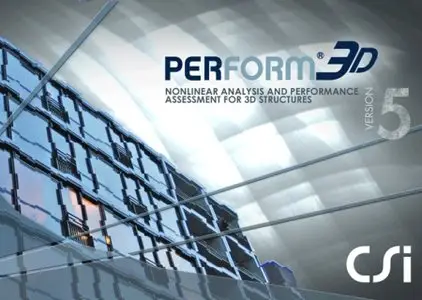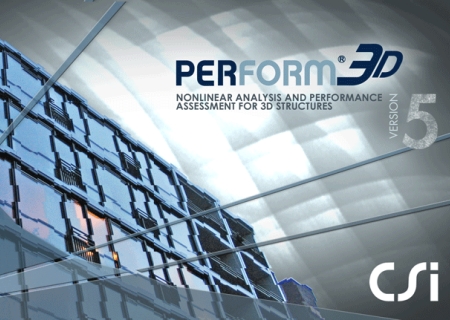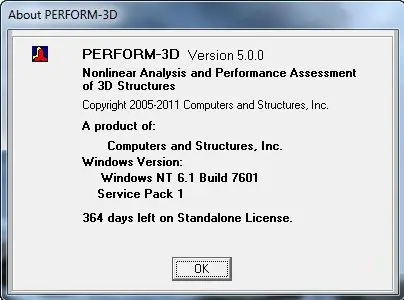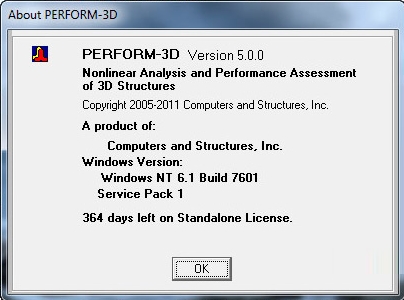CSI Perform 3D 5.0 | 210.7 mb
PERFORM-3D is an ideal tool for nonlinear performance-based analysis and design, created by Dr. Graham H. Powell, University of California at Berkeley Professor Emeritus of Civil Engineering.
PERFORM-3D is a structural-engineering software useful for the performance assessment of structural systems. State-of-the-art constitutive-modeling capabilities enable characterization of material nonlinearity, including strength and stiffness degradation during component-level hysteresis. Analysis capabilities also extend to geometric nonlinearity and effects associated with P-Delta behavior. Advanced modeling tools enable a sophisticated simulation of structural behavior. Components may be grouped according to type, location, and limit state before evaluation proceeds in terms of strength or deformation-based demand-capacity ratio. The dynamic display of D-C usage is available through color-coordinated time-history animations.
PERFORM-3D version 5 Enhancements:
- A 64-bit version of the analysis engine is now utilized when Peform-3D is installed on a 64 bit computer. The 32-bit analysis engine is still used on 32-bit computers. The 64-bit engine allows larger problems to be solved, and tends to run faster than the 32-bit engine.
- A large-capacity eigenvalue routine has been added. In earlier versions, the eigenvalue routine could not accommodate structures with very large numbers of mass points. The new eigenvalue routine (the same as in SAP2000) allows a larger number of mass points than was previously possible.
- Warnings are now provided when an unstable or ill-conditioned stiffness matrix is detected. When an analysis model is set up for a complex structure, a common problem is that the model may be poorly conditioned numerically, or may be unstable. For an explanation of the causes of poor conditioning and instability, see the book Modeling for Structural Analysis: Behavior and Basics, by Powell, Chapter 3, especially Section 3.5, available from CSi.
- Formal documentation is now provided describing the format of the binary results files. For each analysis, Perform-3D writes the analysis results in a number (often a large number) of short binary files. Many users access these binary files directly, to add post-processing operations that are not included in the graphical user interface.
- The number of modes shapes printed in the text file M000.txt can now be specified. In earlier versions, all mode shapes were printed in this file, and for a large structure the file could be very large. Usually the number now specified will be zero, so that detailed mode shapes are not printed, and the M000.txt file will be quite short.
- The analysis logs for each Analysis Series are now written to separate files, making them more manageable. In earlier versions, a “log” of each analysis in the series is also included in ECHO.txt, showing details of the analysis, the computation time for each analysis step, and an energy balance. For a large structure, this made the ECHO.txt file very long
About CSI
Founded in 1975, Computers and Structures, Inc. (CSI) is recognized globally as the pioneering leader in software tools for structural and earthquake engineering. Software from CSI is used by thousands of engineering firms in over 160 countries for the design of major projects, including the Taipei 101 Tower in Taiwan, One World Trade Center in New York, the 2008 Olympics Birds Nest Stadium in Beijing and the cable-stayed Centenario Bridge over the Panama Canal. CSI's software is backed by more than three decades of research and development, making it the trusted choice of sophisticated design professionals everywhere!
visit my blog
Name: CSI Perform 3D
Version: 5.0.0
Home: www.csiberkeley.com
Interface: english
OS: Windows XP / Vista / Seven
Size: 210.7 mb
No mirrors please





